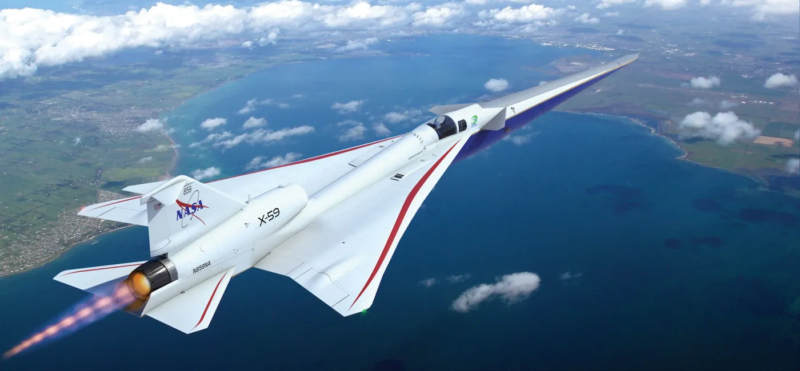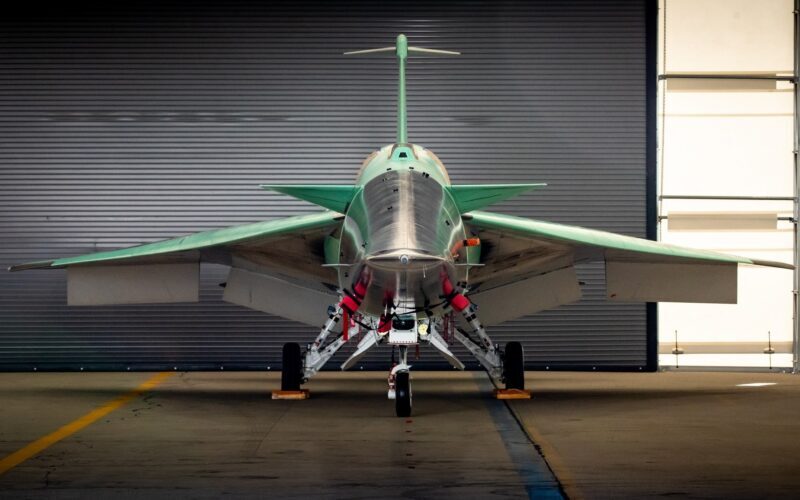Lockheed Martin & NASA’s X-59 Completes First Flight, Launching Quiet Supersonic Revolution

The X-59 “QueSST” demonstrator — developed by NASA in partnership with Lockheed Martin — has successfully completed its first test flight, marking a historic milestone in aviation innovation and the dawn of a new era in quiet supersonic travel.
The single-engine jet took off from Lockheed Martin’s Plant 42 facility in Palmdale, California, and landed safely at Edwards Air Force Base. During this maiden flight, the X-59 flew subsonically at around 230 mph and approximately 12,000 feet, with NASA test pilot Nils Larson at the controls.
While this initial sortie did not break the sound barrier, it officially kicks off the flight test campaign that will eventually push the aircraft to speeds of Mach 1.4 (about 925 mph) and altitudes of up to 55,000 feet.
As part of NASA’s Quesst mission, the one-of-a-kind X-59 will demonstrate technologies that enable supersonic flight — faster than the speed of sound — without generating the disruptive sonic booms that have long restricted such travel over land. NASA will then survey public responses as the aircraft flies overhead, sharing the data with national and international regulators. The goal is to help define new, evidence-based noise standards that could pave the way for future commercial supersonic operations over populated areas.

Why the X-59 Matters
For more than 50 years, supersonic flight over land has been banned because of the deafening “sonic boom.” The X-59 aims to replace that sound with a much gentler “sonic thump,” potentially transforming how — and where — supersonic aircraft can fly.
Its distinctive design features a long, needle-like nose to smooth out shockwaves, a top-mounted engine to reduce noise reaching the ground, and a forward cockpit equipped with external camera displays instead of traditional windows. Every element of the aircraft has been engineered to minimize noise and vibration for those on the ground.
By flying the X-59 over select communities and collecting real-world sound data, NASA hopes to give regulators the tools they need to update outdated noise restrictions. The result could be the first step toward allowing commercial supersonic flight over land, a breakthrough that would drastically cut travel times across continents.
What’s Next
Following its successful first flight, the X-59 program will proceed to higher-speed and supersonic test phases. These include data collection over ground tracks, community perception studies, and additional technology validation flights. All of these efforts fall under NASA’s broader Quiet SuperSonic Technology (QueSST) mission.
If successful, the implications for commercial aviation are profound. The X-59 could lay the foundation for a new generation of low-boom supersonic airliners, potentially reducing transatlantic flight times — such as New York to London — to just three or four hours. It could also revive the excitement of supersonic travel not seen since the retirement of the Concorde in 2003.
Broader Significance
- Technological leadership: The X-59 reaffirms the United States’ position at the forefront of aerospace innovation and research.
- Regulatory shift: Success could drive major changes to global aviation rules, opening new supersonic flight corridors for passengers and cargo.
- Commercial impact: Airlines and manufacturers are watching closely, anticipating opportunities to invest in low-boom, fuel-efficient supersonic designs over the next decade.
The first flight of the X-59 represents far more than an engineering achievement — it’s a bold declaration of the future. By taming the sonic boom, NASA and Lockheed Martin are not just building a new aircraft; they are redefining the boundaries of aviation itself.
If the upcoming tests prove successful, we may soon enter an age where supersonic travel becomes routine rather than rare. Until then, the X-59 will continue its mission — flying, testing, and quietly reshaping the sound of speed for generations to come.
Related News: https://airguide.info/?s=supersonic, https://airguide.info/category/air-travel-business/aircraft-finance/
Sources: AirGuide Business airguide.info, bing.com, reuters.com, NASA.gov
